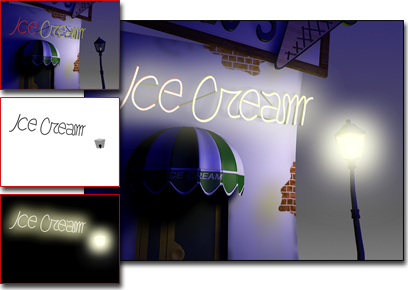G-Buffer (graphics buffer) is a type of rendering channel. Two file formats output by 3ds Max, RLA and RPF, can incorporate masks that are based on graphics buffer (G-Buffer) channels instead of the more widely used RGB and alpha channels. In addition, some kinds of Filter and Layer events as well as certain rendering effects can post-process objects or materials designated by the G-Buffer.

Main image: G-buffer used to apply a glow to lighting in a scene
Upper left: The same scene with no glow applied
Middle left: Objects selected using the G-buffer
Lower left: Glow applied to the G-buffer objects
You can set two kinds of these channels in the scene to identify and group objects or materials for a particular post-processing effect.
You create object-specific or material-specific post-processing by following this general procedure: